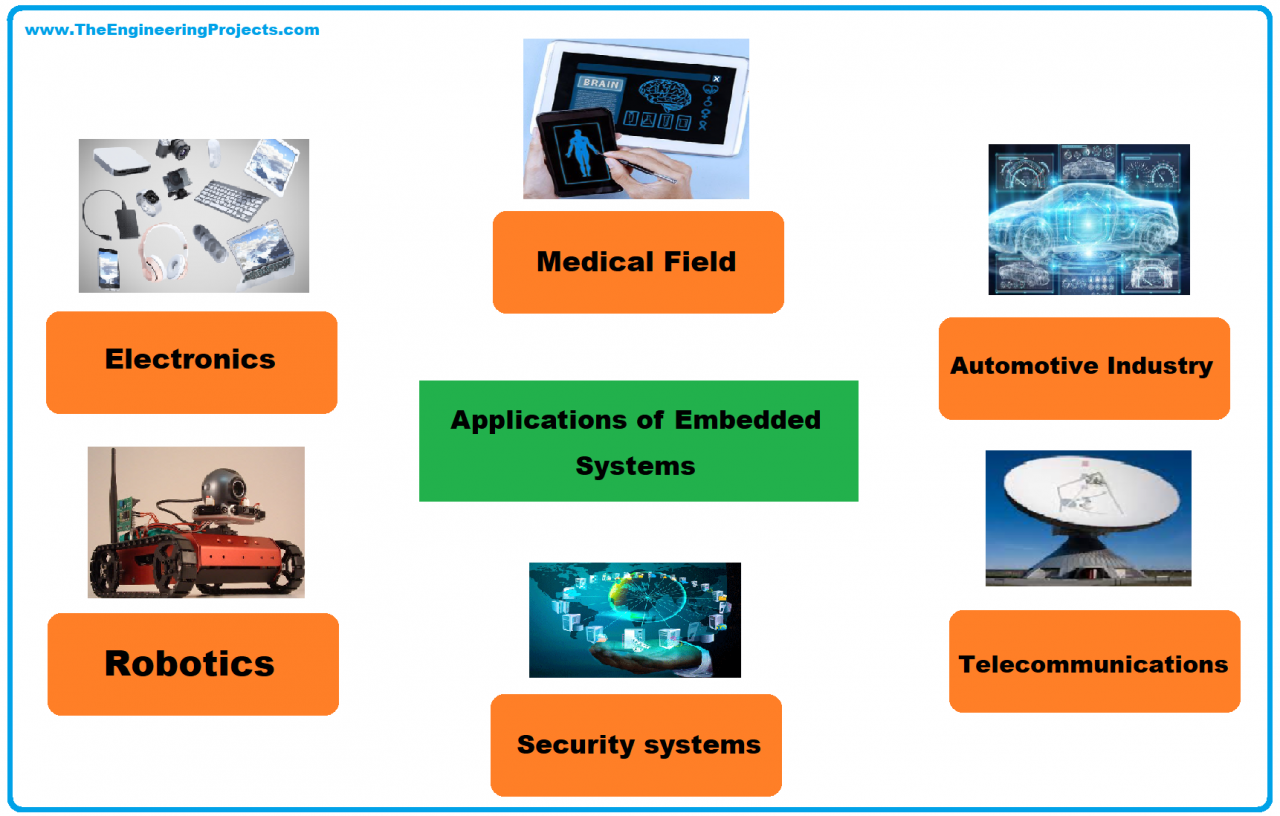An embedded system must have specific characteristics, types, and design considerations to meet the unique demands of real-time applications. These systems, often found in devices like microcontrollers and digital signal processors, play a crucial role in industries ranging from automotive to healthcare.
Understanding the defining traits, types, and design considerations of embedded systems is essential for engineers and developers working with these technologies. This article provides a comprehensive overview of the key aspects of embedded systems, empowering readers to create efficient and reliable solutions.
An embedded system must have a sensor to collect data, a controller to process the data and make decisions, and an actuator to carry out the decisions. These three components form the basic structure of an automatic control system, as described in more detail at 3 basic components of an automatic control system . An embedded system must have these components to function properly.
Characteristics of Embedded Systems
Embedded systems are small, low-power devices designed for specific functions within larger systems. They often operate in real-time, meaning they must respond to external events quickly and predictably.
An embedded system must have the ability to sense, process, and actuate, and the components necessary to achieve this. Just as an effective performance evaluation system will quizlet , an embedded system must have the right tools to get the job done.
Small Size and Low Power Consumption
Embedded systems are typically small and compact, often fitting into a handheld device or even a single chip. They consume little power, making them ideal for battery-operated devices or applications where energy efficiency is crucial.
An embedded system must have a reliable and efficient way to protect itself from external threats. Just like our bodies have an elegant defense immune system to fight off infections, embedded systems need robust security measures to fend off cyberattacks.
An elegant defense immune system, as discussed in this article , provides a comprehensive approach to protecting embedded systems from vulnerabilities and exploits. It ensures that embedded systems can operate securely and reliably, even in the face of sophisticated threats.
Dedicated Functionality and Real-Time Constraints
Embedded systems are designed for specific tasks and are not general-purpose computers. They execute a limited set of instructions and must respond to external events within strict time constraints. This real-time performance is essential for applications such as controlling industrial machinery or monitoring medical devices.
Types of Embedded Systems
There are various types of embedded systems, each tailored to specific applications:
Microcontrollers, An embedded system must have
Microcontrollers are the most common type of embedded system. They are small, inexpensive, and capable of performing basic tasks such as controlling I/O devices, sensing environmental conditions, and executing simple algorithms.
An embedded system must have a cooling system to regulate its temperature. For instance, an automobile cooling system holds 16 l of water to keep the engine from overheating. Embedded systems in general need cooling systems to maintain optimal performance and prevent damage from excessive heat.
Digital Signal Processors (DSPs)
DSPs are designed for processing digital signals, such as audio or video. They excel at performing complex mathematical operations quickly and efficiently, making them ideal for applications like digital filtering and audio synthesis.
An embedded system must have the ability to perform specific tasks without the need for human intervention. Take an air conditioning system, for instance, which involves the mixing of different air streams to achieve the desired temperature. An embedded system in this context would monitor and control the mixing process, ensuring efficient and effective operation.
Application-Specific Integrated Circuits (ASICs)
ASICs are custom-designed chips that are optimized for a specific function. They offer the highest performance and lowest power consumption but are also the most expensive to develop and manufacture.
Yo, check it! An embedded system’s gotta have the juice to keep up. And just like an effective performance evaluation system will keep your team on track, a solid embedded system will make sure your device’s performance is off the charts.
It’s all about finding the right balance of power, efficiency, and reliability. Get that dialed in, and you’re golden.
Design Considerations for Embedded Systems
Designing embedded systems requires careful consideration of various factors:
Cost
Cost is a critical factor, especially for mass-produced devices. Designers must balance the cost of components, manufacturing, and testing against the desired functionality.
An embedded system must have a tailored operating system that serves specific purposes, like the ones outlined in 3 purposes of an operating system . These include managing resources, providing services to applications, and ensuring the system’s overall functionality. Ultimately, an embedded system must have an operating system that meets its unique requirements and optimizes its performance.
Performance
The performance of an embedded system depends on its processor speed, memory capacity, and I/O capabilities. Designers must ensure that the system can meet the performance requirements of its intended application.
Reliability
Embedded systems must be reliable, especially in critical applications such as medical devices or industrial control systems. Designers must consider factors such as component quality, redundancy, and error handling to minimize the risk of failures.
Final Conclusion

In conclusion, embedded systems are essential components of modern technology, enabling real-time functionality and low power consumption in a wide range of applications. By understanding the characteristics, types, and design considerations discussed in this article, engineers and developers can harness the power of embedded systems to create innovative and impactful solutions.
FAQ Insights: An Embedded System Must Have
What are the key characteristics of embedded systems?
Embedded systems are typically small, low-power devices with dedicated functionality and real-time constraints.
What are the different types of embedded systems?
Common types of embedded systems include microcontrollers, digital signal processors, and programmable logic controllers.
What are the important design considerations for embedded systems?
Cost, performance, reliability, and resource utilization are key factors to consider when designing embedded systems.